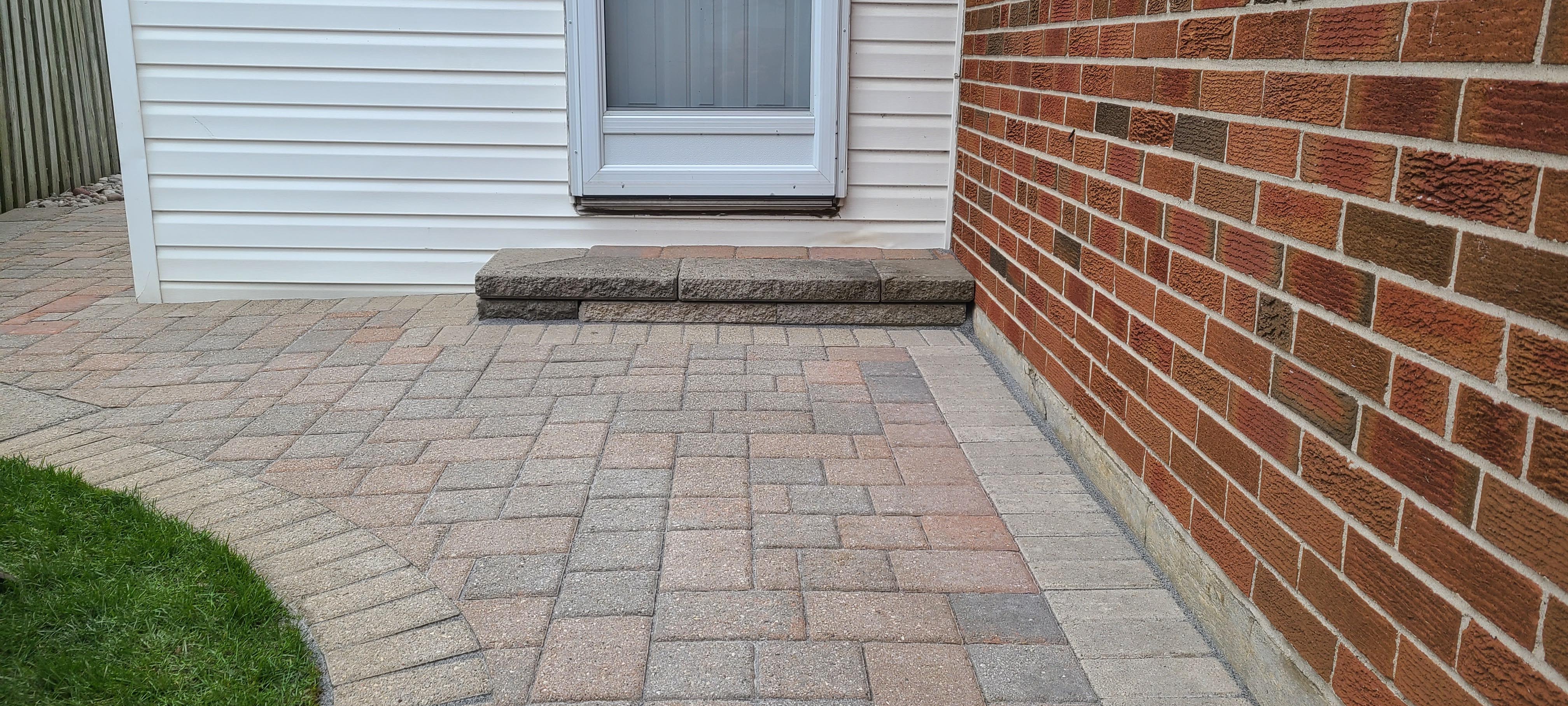Do your patio pavers appear to be sinking? Pavers naturally sink over time due to pressure on top and the softness of the soil underneath them.
The difficulty is that this results in an uneven surface that might be dangerous if tripped upon. Water may pool up in the low areas, causing the stone to deteriorate. Plus, sinking patio pavers aren’t particularly attractive.
In this guide, we’ll break down how to repair sinking interlock pavers quickly and efficiently. We’ll also take a look at how you can prevent sinking interlock pavers in the future, and how professional help can yield better results.
 After
After
 Before
Before
How to Repair Sinking Interlock Pavers
Get Your Tools Together
You’ll need sand or limestone screening to fill in the gaps beneath the paver, a rubber mallet, trowel, soft bristle brush, and a flathead screwdriver to get started.
Remove Your Interlock Pavers
To begin, use the tip of a tiny, flat-headed screwdriver to remove the pavers. Pry up the end of each paver one at a time. The wiggling procedure can often be aided by using two screwdrivers, one at each end of the paver. Pound the pavers with a rubber mallet to loosen them up if they’re stuck in firmly. Before going on to the next stage, clean your pavers.
Add Screening and Level Your Pavers
Scrape and level the now-exposed earth beneath the sinking pavers with your trowel. Fill the low area with all-purpose sand or limestone screening, then draw the screed over the sand to level it out, keeping the notched ends of the screed aligned with the level pavers.
Pro Tip: if you don’t have a screed board, use a straight 2×4 that’s as long as your working area to level everything out.
Lay and Seal Your Interlock
Finally, set the interlock pavers back to their original positions. Then pound them down with the rubber mallet until they’re level with the other pavers. Re-seal the joints by sweeping polymeric sand into the edges.
Prevent Future Sinking Pavers
Unfortunately, many sunken pavers are the result of natural ground movements or long-term use. However, if your pavers sunk as a result of improper installation, maintenance, or anything substantial being placed on them, you may avoid this in the future.
The best thing you can do is have an expert inspect your interlock pavers and determine if your sinking natural or due to a problem.
Get the Best Interlocking Pavement Repair with Top-Notch Professionals
If you need a professional hands-off solution to fixing your sunken interlock, our team of interlock experts at Terrastone Landscaping can help. Give us a call today to learn more and get a FREE estimate!
If you already have photos and measurements, send them to us and we’ll provide you with a FREE Quote Online!




